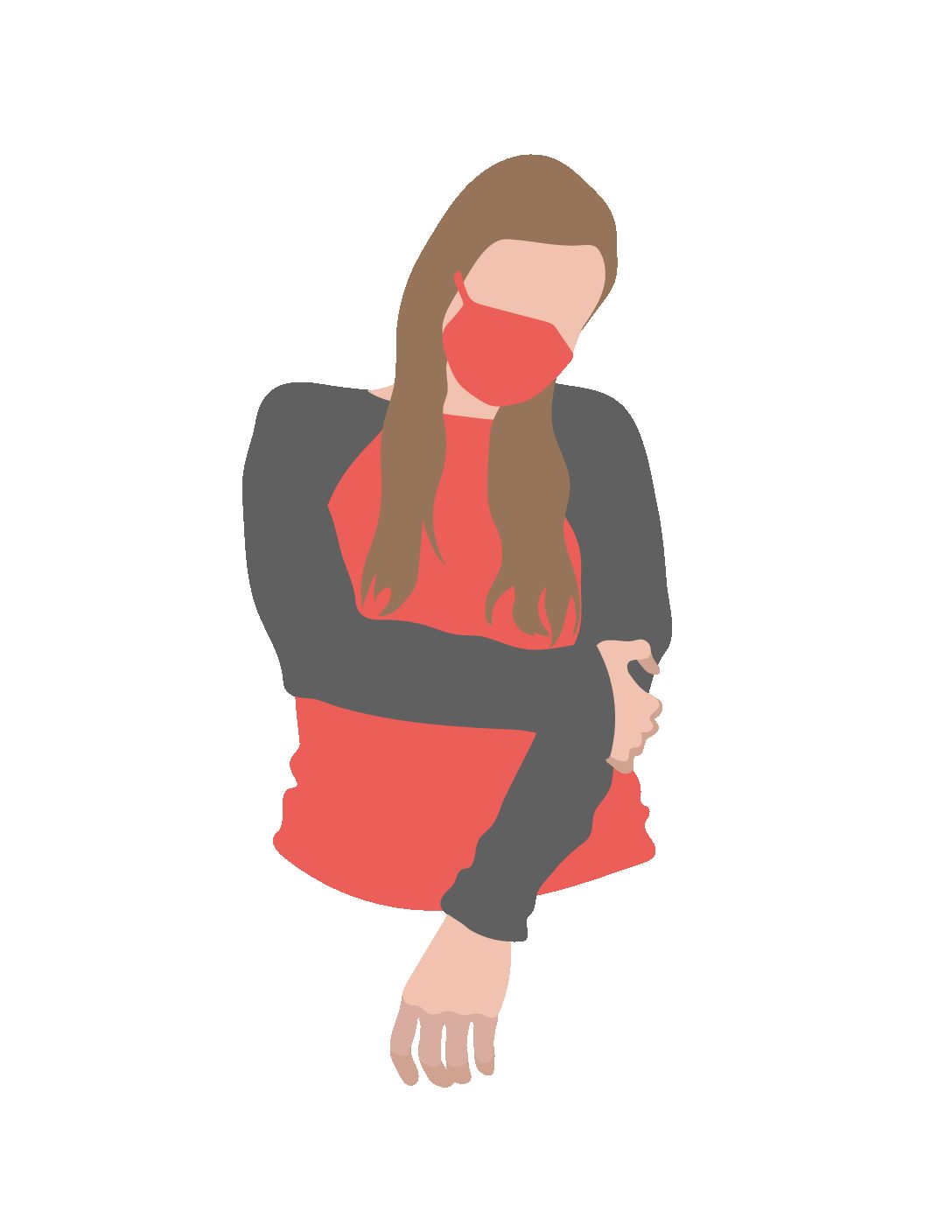Social anxiety can pose problems on any regular day at school, such as walking through the halls, going to lunch, or giving a presentation at the front of the classroom. However, after nearly a year of lessened social interaction with online school, the first step back into the school building for full in-person learning may cause an even bigger spike of social anxiety for certain students.
Junior Cadence Mayrand said she thinks this will be the case for her. “It’ll definitely make it worse. I am already nervous about COVID in general, but I also just don’t like being around that many people, so I’ll probably distance myself and anxiety will get worse.”
Mayrand said she was diagnosed with social anxiety just last year and noticed it causing issues for her before coronavirus was in the picture. “I mean, the hallways were always hard because, just my own head was telling me that people were talking about me or looking at me, but then we went into lockdown and I couldn’t see anyone and I got used to that. So, just going back made it worse because I wasn’t used to seeing all of those people constantly.”
When Mayrand starts to get anxious at school, she said she will try and text her close friends or focus on her schoolwork rather than trying to talk to other students she is not as comfortable with. If it gets really bad, she will excuse herself to use the restroom. Yet, with these calming methods, Mayrand said she would still much prefer to stay online.
“I don’t like being around large groups of people, so I definitely like online better because it’s more that I’m able to work on my time and I don’t have distracters at school that prevent me from doing my work,” Mayrand said.
Similar to Mayrand, sophomore Ryan Bell has battled his own fight with social anxiety and prefers online school over in-person.
“It’s definitely nerve-racking because it’s just not safe, because it’s not like the virus is gone, so I don’t know why we’re going full-time back. [The first day back] is probably gonna be kind of rocky because in my first hour, I have to present a video of my group and I’d be in the video, which I do not like watching me do anything, so that’s going to be a nervous wreck,” Bell said.
Online school may have had more negative mental health effects for some, but Bell said that he thinks in-person school is worse for him personally.
“I feel like in-school definitely has more negative effects, because online I feel like I was actually doing way better than we do in-person, since I didn’t actually have to go to school and have to experience anxiety if I didn’t know something. Online, I could just quickly look it up, and in-person you can’t do that and embarrass yourself in front of the whole class if you don’t know anything,” Bell said.
Along with this, Bell said that he will stay in his room for a couple of hours to calm himself down when he experiences anxiety. In the middle of a normal school day, this will not be possible.
Licensed Specialist Clinical Social Worker Barry McAnulty said an increase in social anxiety when going back in-person is completely normal, but students should listen to their bodies and do what is best for them.
“If they start getting shortness of breath, lightheadedness, dizziness, that kind of thing, they’re not having a heart attack. They’re having symptoms of a panic attack or some anxiety symptoms and if they can just take some time and get some breathing under control … it’s going to be really important that they try to hang in there and they push through it,” McAnulty said.
While it may be the opposite of what some students want to do, McAnulty said that students with social anxiety should put themselves in that uncomfortable position of being in-person and not switching to the online academy. McAnulty said that by students removing themselves from this situation, they will continue to feed their social anxiety.
For students having anxiety about the COVID aspect of going back full in-person, McAnulty said to look to the facts about the virus for reassurance.
“When this first started back in March … we had some very concrete, just simple facts about how COVID is spread. So, we know that it spread through droplets, through coughing or sneezing, and then if it was on a surface … typically you’d have to swipe your hand on a surface and then touch your hand to your mouth, your nose, or your eyes,” McAnulty said, “So, social distancing, hand-washing, obviously we’re required to wear a mask; they just have to have that reassurance that, ‘Hey, this is safe’ and try to stay out of what we’d call irrational thought processes.”
To further help cope with this increase of anxiety, whether it be socially or about COVID, educational therapist Kristin Scharlau said students have resources available to them at school to help them get through the day, especially the first few days of coming back in-person.
“If you are feeling really overwhelmed, you can ask to come or do an e-pass to the counseling center and we can try to help with some more in-depth approaches if we need to. If you need to talk to a counselor or if you feel like ‘I can’t do lunch today, I need an alternative place to eat’ or ‘I can’t do passing periods today, it’s too overwhelming,’ we could try to figure out an alternative passing period for students that are really struggling,” Scharlau said.
For students who are dealing with less severe circumstances and feel that they can cope through self-help, Scharlau said she recommends doing deep breathing exercises in situations that cause anxiety or to listen to calming music when walking through crowded hallways. Along with this, Scharlau said she highly recommends having a morning and nighttime routine to prepare for the school day.
“I usually recommend like 30 minutes before you actually kind of want to be asleep to have a nighttime routine that gets you kind of settled, whether that be an app or doing some type of meditation, or reading. Try to do something that doesn’t involve a screen if you can,” Scharlau said, “In the morning, maybe even if it’s just five minutes or if it’s on your bus or on your drive to school, listening to something motivational, listening to music that you really enjoy that puts you in a good headspace, or doing a meditation in the morning to kind of set up your day and your attention for the day is really good too, as well as journaling.”
Above all else, Scharlau said she wants students to know that they always have resources available to them at school.
“I just want to make sure students know there are people here at school to help. Even if you don’t know how to ask for help, you can ask a teacher and they can get you down to the counseling center … So, there are always resources if you’re struggling with depression, anxiety, anger, suicidal thoughts, OCD, any type of stuff we can definitely help,” Scharlau said.
For McAnulty, he said students should know that life will not stay this way. “Just reassure people that today is not forever, that ‘new normal’ shouldn’t be used, it should be a temporary normal. This is a temporary normal, not a new normal, that eventually will get better.”















